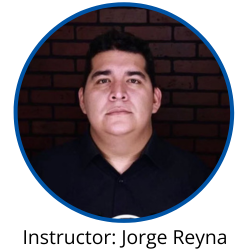Math and Physics for NDT: Magnetic Particle Testing 22 April 2025

Learning Event: Instructor-Led Training, Virtual
Format: 1-day class, Zoom
Dates: 22 April 2025, 8:00 a.m. - 2:00 p.m. (America/Chicago/CST)
Contact Hours: 5
IACET CEUs: NA
Valid for ASNT Level III recertification: Yes
Pricing
- Member: $300
- Nonmember/Associate: $450
Associate members and nonmembers do not receive discounts. Upgrade your membership today to access exclusive savings!
Course Description:
This course provides a comprehensive foundation in mathematical principles essential for PT applications. It is split into two sections, the first is a pre-requisite section where learners will strengthen essential mathematical skills by mastering numerical formatting, unit conversions, exponents, and logarithms while applying the order of operations to solve equations. You will also explore trigonometric principles, including right triangle properties, Pythagorean theorem, and sine functions, to build a strong foundation for technical and engineering applications.
The second part of the course relates to math and physics concepts that MT technicians may encounter. This course provides a comprehensive understanding of magnetism, electromagnetic properties, and their applications in nondestructive testing (NDT). Learners will master unit conversions for magnetic field intensity, flux density, and flux, as well as key lighting measurements. The course explores fundamental magnetic concepts, including ferromagnetism, magnetic domains, flux leakage, and hysteresis curves, while differentiating between longitudinal and circular magnetic fields. Participants will apply formulas to calculate magnetic permeability, circular field intensity, ampere turns, and fill factors for various test setups. Advanced topics include UV light properties in magnetic particle testing, current rectification methods, and their impact on inspection quality. By the end of the course, learners will be equipped with enhanced mathematical skills to perform magnetic particle testing procedures. *Students will need access to a Casio FX-260 Solar or other non-programmable scientific calculator for use during the course*
Course Objectives:
- Convert between oersted and ampere per meter for magnetic field intensity
- Convert between tesla and gauss for magnetic flux density
- Convert between weber and maxwell for magnetic flux
- Convert between footcandles and lux for light intensity
- Define ferromagnetism and its significance in magnetic testing
- Explain the concept of magnetic domains and their behavior
- Describe the attraction and repulsion of magnetic poles
- Identify properties of magnetic lines of force
- Explain the role of flux leakage fields in detecting discontinuities
- Differentiate between coercivity and retentivity in ferromagnetic materials
- Apply the formula describing magnetic permeability
- Plot B and H values on a hysteresis curve
- Define magnetic permeability and reluctance
- Differentiate between longitudinal and circular magnetic fields
- Calculate the total magnetic flux for an electromagnetic yoke
- Use the right-hand rule to determine magnetizing current direction
- Calculate circular magnetic field intensity in tubular test objects
- Establish amperage requirements per hole diameter for a central conductor
- Apply equations to determine rotational requirements for complete test coverage
- Define "ampere turn" as a unit of measurement
- Explain the term "fill factor" in relation to magnetic particle testing
- Calculate ampere turns for different fill factor levels in coils
- Determine the required current based on the number of cable wraps
- Calculate the length-to-diameter ratio of a hollow test object
- Determine the effective diameter of a cylindrical test object
- Plot the wavelength of ultraviolet radiation on the electromagnetic spectrum
- Differentiate UV-A, UV-B, and UV-C radiation based on wavelength
- Specify the wavelength used by magnetic particle pigments for fluorescence
- State the minimum ultraviolet light intensity requirements for testing
- Convert units related to light intensity, including watts per square meter to microwatts per square centimeter and footcandles to lux
- Differentiate three types of rectified alternating current
- Explain how each type of rectified current is generated
- Evaluate the advantages and disadvantages of each type of rectified current

Jorge T. Reyna is a skilled and experienced professional in the field of NDT, welding, and coatings inspection. He holds several certifications including AMPP Master Coatings Inspector (#MCI-0059) and ASNT Level IIIs (#224796) in various non-destructive testing methods such as PT, MT, VT, UT, LT, RT, ET, MFL and IR. He is also a senior AWS SCWI (#22010198), AMPP Senior Certified Coating Inspector (#S-110220), SSPC PCS (#2021-402-428), and ACI Certified Concrete Field Testing inspector (#02082547). Jorge is well-equipped to handle any inspection project. He has extensive field experience, having worked on projects in Mexico, Panama, Ecuador, and China. He is also fluent in Norwegian and Italian, which allows him to communicate effectively with clients and contractors in those countries. Since 2013, Jorge manages his own inspection company named JRSA Inspections with its base in Monterrey, Mexico.
For any questions, please email education@asnt.org